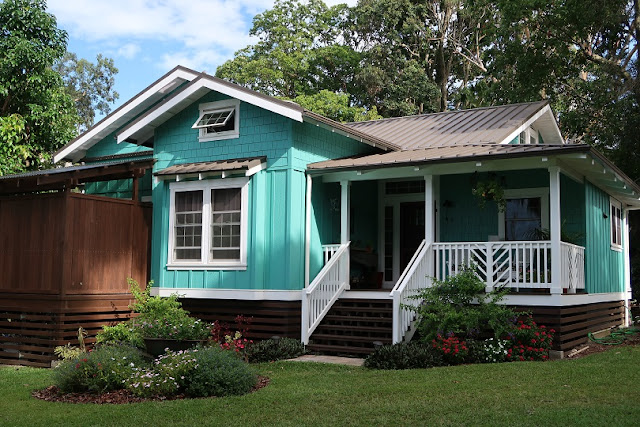Thailand - Chiang Rai - Hill Tribes
We visited a hill tribe village as part of a tour of the
Chiang Rai area, including the White Temple and the Black Museum, about which I
have already written. We were unsure about this visit at first, fearing it
would feel like we were voyeurs at a human zoo, but with our guide helping to
communicate with the villagers we were able to interact with them a bit and it
actually ended up being a very interesting and positive experience.
The village we visited included about 200 individuals from
five different tribes. Some of these groups have been in this mountainous
region of northern Thailand for ages; others are more recent refugees from
Myanmar or Laos. It was virtually all women we saw in the village as the men
were off working in the fields. Many of the women were weaving as they make all
their family’s clothes as well as various handicrafts that they sell. They all
have displays set up to entice us tourists, but these weren’t commercial stalls
– just the front porches of their simple bamboo and thatch houses. So yes, it
is a bit touristy, but you can’t fault the villagers for trying to supplement
their subsistence farming. They don’t speak Thai and don’t have Thai
citizenship (even though some were born in Thailand) so they have limited
income opportunities, plus the Thai government has put restrictions on their
slash and burn agricultural practices and opium growing. We bought a couple of
things for gifts back home (not opium).
Probably the most intriguing of the hill tribes is the
Paduang Long Neck, also known as the Long Neck Karen (they are a subgroup of the
Karen tribe). They are from Myanmar, having fled the conflicts there in the 1980s and 1990s. The women wear neck rings of brass that make their necks look
abnormally long. They are fitted with their first coil of rings at the age of 5
and then every five years that is replaced with a longer coil, up until the age
of 45. So the older the person, the longer the neck. Actually, the rings only appear to elongate the neck. What is really
happening is the weight of the rings is pressing down on the collar bone and compressing
the rib cage, making the neck appear longer. Why do they do it? It may be
considered a sign of beauty and wealth, the better to attract a good husband.
It may be the ordered response of a tribal leader to tiger attacks where
several villagers were killed by being bitten on the neck. Or it may be one of
the traditions that have been around so long that no one can quite remember how
it all started.
Member of the Long Neck Karen Tribe. She looks like she's twelve, but she's actually 18, is married and has a child.
Many women were working at their weaving while we were there.
Illustration of the coiling process.
(photo by Deborah)
The house on the left is mud, but most are bamboo with thatched roofs, such as the one on the right.
The substance on her face is a ground-up root paste of some sort that is supposed to offer sun protection (you often see it on babies), but seems also to sometimes be applied for aesthetic reasons.
Based on the number of rings I'm guessing this is a grandmother and grandbaby rather than a mother and child.
Village street.
(photo by Deborah)
Member of the Kaynor, or Big Ear Tribe, known for the ear lobe extensions. Like the Long Necks, they also fled persecution in Myanmar. Notice also the little designs she has drawn on her face.
Another Kayor, also wearing knee and angle rings. The girls learn to weave at a young age.
I don’t think the colorful traditional dress the women were
wearing was for our benefit because we’ve seen photographs in museums and
cultural centers where the hill tribe people were out harvesting in the fields
wearing the same elaborate outfits.
In the village. Must be rather muddy when it rains.
Member of the Yao Tribe, who trace their roots back to China. We bought a hand-embroidered table runner from this lady.
View of the village from across a stream.
This colorful but diminutive lady is from the Akha Tribe, thought to be originally from Tibet, having come to northern Thailand around the turn of the 20th century.
There is one of these rather graphic sculptures by the arch at each entrance to the village, and is meant to define where the humans live and spirits are not allowed to enter.



















Comments
Post a Comment